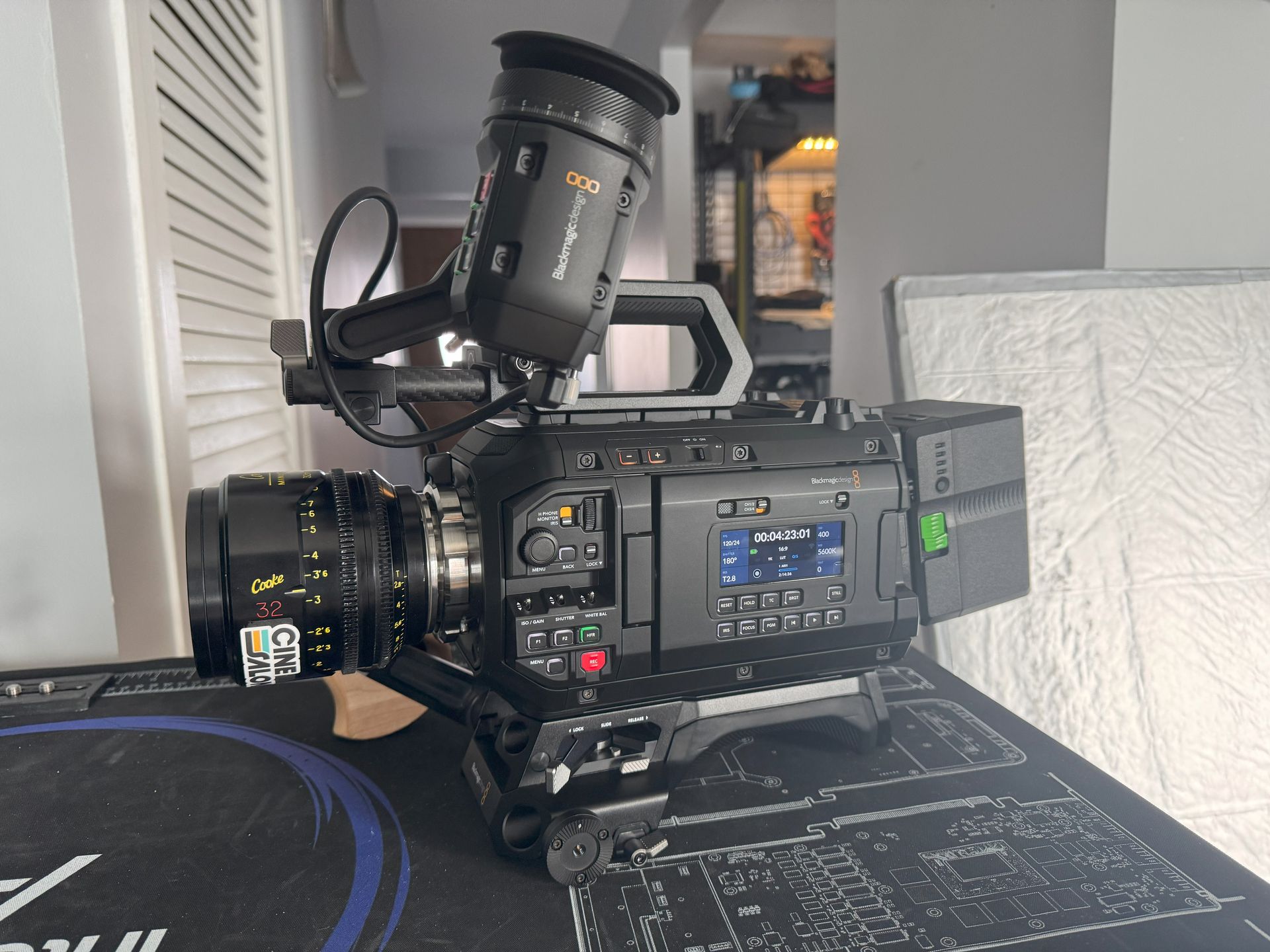
In today's digital world, video content rules. We use videos for many things. We entertain, educate, and inform them. Videos help us tell stories. They help us express ideas.
But for videos to work, they need the right format. A video's format affects its quality. It affects how and where we can play it. In simple terms, a video format is key. It's like a language. It's how videos communicate with players and platforms.
Overview of Changes and Improvements in Video Formats Over the Years
Video formats have evolved. In the past, we had fewer choices. Formats like VHS and Betamax were big. They were physical formats. They had limitations. Today, digital formats have replaced them. These formats offer better quality. They are flexible. They work on many devices and platforms.
Let's take a quick look at this journey.
In the '70s and '80s, VHS was a big deal. It was the main video format. Then came DVDs in the '90s. They offered better quality and more space. They were easier to use.
Then, the digital revolution began. It changed everything. We got formats like AVI, MP4, and MKV. These are digital formats. They don't need physical storage. They are easy to share and stream. They offer better quality and flexibility.
But the changes didn't stop. Video formats kept improving. They had to keep up with new needs and technologies. High-definition video, 4K, and 8K became things. Streaming became a big deal. Video formats adapted. They got better. They became more efficient.
Today, we have many options. The video format landscape is diverse. But not all formats are the same. Some are better than others. These are the ones we will focus on.
In this guide, we will explore the best video formats. We'll look at their features. We'll look at their strengths and weaknesses. And we'll see why they are the best options today. Let's dive in!
Understanding Video Formats
Explanation of What Video Formats Are
So, what is a video format? It's a standard. It defines how to store video data. It's like a blueprint. It tells a video player how to decode and play a video.
Think of a video as a complex puzzle. A video format is a guide. It shows how to put the pieces together. It helps the player understand the video.
Importance of Choosing the Right Video Format
Choosing the right video format is vital. It's like choosing the right tool for a job. It can make or break your video experience.
The right format gives you the best video quality. It ensures smooth playback. It makes sharing and streaming easy. It makes sure your video works on your device.
The wrong format can cause problems. It can lead to poor quality. It can cause playback issues. It can make your video incompatible with some devices.
Consider these Key Factors When Selecting a Video Format
Several factors come into play. You should think about:
1. Purpose: Why are you making the video? Is it for streaming? Is it for download? Is it for sharing on social media? Different formats work best for different purposes.
2. Device compatibility: Will your video play on a PC? On a mobile device? On a game console? You need a format that works on your target devices.
3. Quality: What quality do you want? High-definition? 4K? 8K? Different formats offer different quality levels.
4. File size: How big can your video file be? Some formats create smaller files. Others create larger ones.
5. Software compatibility: What software will you use? Some video editors support certain formats. Others don't.
Considering these factors is key. It helps you choose the best video format. It helps you get the best out of your video content.
The next sections will explore eight of the best video formats of the new age. We will see what makes them stand out. We will see what they offer. And we will see how they meet different needs. Let's get started!
Overview of the Current Top 8 Video Formats in the Digital Space
Brief Explanation of Each of the Eight Video Formats to be Discussed
Eight video formats currently stand out in the new digital dispensation. They offer the best features. They meet the needs of users and creators. They work well with modern technologies.
These formats are:
1. MP4 (MPEG-4 Part 14)
2. AV1 (AOMedia Video 1)
3. HEVC (High-Efficiency Video Coding)
4. MKV (Matroska Video)
5. WebM
6. VP9
7. FLV (Flash Video)
8. MOV (QuickTime File Format)
These formats are diverse. They have unique features. They are suited to different uses. Some work best for streaming. Some are great for high-quality videos. Others are perfect for web use.
Reasons These Formats Are Considered the Best
Why are these the top video formats in 2023? Here are a few reasons:
1. Quality: These formats offer excellent video quality. They support high-definition, 4K, and even 8K videos.
2. Efficiency: They use advanced compression techniques. They make high-quality videos smaller. This makes them easier to stream and download.
3. Compatibility: These formats work on many devices. They work with many video players. They are widely supported.
4. Flexibility: They are adaptable. They work well with different types of content. They meet different needs.
We will look at each of these formats in detail. We will explore their features. We will see their pros and cons. And we will see why they are the best choices today. Stay tuned!
1. MP4 (MPEG-4 Part 14)
Introduction and General Features of MP4
MP4 is a popular video format. It's been around for years. It's well-known and widely used. It's a digital video format. It uses the .mp4 file extension.
MP4 is versatile. It handles video and audio. It can also store text and images. This makes it a great choice for multimedia content.
MP4 uses compression. This makes files smaller. It makes them easier to store and share. And it does this without much loss in quality.
Advantages of Using MP4
Why use MP4 ? Here are a few reasons:
1. Compatibility: MP4 works on many devices. It works with many video players. This makes it a safe choice.
2. Quality: MP4 offers good video quality. It supports high-definition videos.
3. Efficiency: MP4 files are small. This makes them easy to share and stream.
4. Versatility: MP4 can store different types of media. This makes it flexible.
Limitations and Considerations of Using MP4
MP4 is great, but it has some limits. For one, it's not the best for very high-quality videos. Formats like HEVC and AV1 are better for 4K and 8K videos.
Also, MP4's compression can reduce quality. This is a trade-off. You get smaller files, but you might lose some detail.
But despite these limits, MP4 is a solid choice. It's reliable. It's easy to use. It's compatible. And it offers good quality. For many people, it's the go-to video format.
2. AV1 (AOMedia Video 1)
Introduction and General Features of AV1
AV1 is a newer video format. It's designed for the Internet. It's built by the Alliance for Open Media. It's a royalty-free format. This means it's free to use and implement.
AV1 is built for streaming. It uses advanced compression. This makes files very small. But it still delivers high-quality video.
The Rise of AV1 in the Streaming Industry
AV1 is rising in the streaming world. Big names back it. These include Google, Netflix, and Amazon. They are using AV1 for their platforms.
Why? Because AV1 is efficient. It reduces bandwidth use. It makes streaming faster and smoother. And it's perfect for 4K and 8K videos.
Benefits and Limitations of AV1
AV1 has many benefits:
1. Efficiency: AV1 makes high-quality videos small. This makes streaming easy. It saves bandwidth.
2. Quality: AV1 supports high-definition, 4K, and 8K videos. It delivers excellent quality.
3. Support: Big companies back AV1. This means it's getting widespread support.
But AV1 has some limits. The main one is processing power. AV1 videos need more power to play. Not all devices can handle this. But this is changing. More and more devices are supporting AV1.
In all, AV1 is a top choice in 2023. It's perfect for streaming. It offers great quality. And it's backed by big names. It's a format to watch.
3. HEVC (High-Efficiency Video Coding)
Understanding the Technology Behind HEVC
HEVC, also known as H.265, is a video format known for its efficiency. It's an improvement on H.264, a previous standard.
HEVC uses advanced compression techniques. It makes video files half the size of H.264 files. But it still delivers the same, or even better, quality.
Advantages and Disadvantages of Using HEVC
HEVC has several advantages:
1. Efficiency: HEVC files are small. This makes them easy to share and stream. It also saves storage space.
2. Quality: Despite the small file size, HEVC delivers great quality. It supports high-definition, 4K, and 8K videos.
3. Versatility: HEVC is versatile. It works well with different types of content. It's used in broadcasting, streaming, and more.
But HEVC has some drawbacks. One is the need for more processing power. HEVC videos need more power to decode and play. Not all devices can handle this.
Another issue is licensing. HEVC isn't free to use. There are fees for using the technology. This can be a barrier for some users and creators.
In summary, HEVC is a great choice for high-quality videos. It's efficient and versatile. But remember the needs for processing power and the licensing fees.
4. MKV (Matroska Video)
Introduction to the Unique Features of MKV
MKV, or Matroska Video, is a free and open-source format. It's named after the Russian nesting dolls, Matryoshka, because it can "nest" a lot of different content.
MKV supports a wide range of video and audio codecs. It can contain multiple audio tracks and subtitles. It can also hold chapter information and metadata.
Reasons MKV is a Good Choice
MKV has several advantages:
1. Versatility: MKV can contain many types of content. This makes it flexible and adaptable.
2. Quality: MKV supports high-quality video and audio codecs. It can deliver great quality.
3. Support for Subtitles and Multiple Audio Tracks: MKV is a great choice if you need multiple languages or subtitles.
Limitations of MKV
MKV is powerful, but it has some limitations. One is compatibility. Not all devices and players support MKV.
Another is size. MKV files can be larger than other formats. This can make them harder to share or stream.
Another is size. MKV files can be larger than other formats. This can make them harder to share or stream.
5. WebM
Explanation of the WebM Format
WebM is a video format designed for the web. Google developed it. It's open-source and royalty-free. This means it's free to use and implement.
WebM uses the VP8 or VP9 video codecs. It also uses the Vorbis or Opus audio codecs. This combination delivers good quality and efficiency.
Advantages of Using WebM
WebM has several strengths:
1. Web-Friendly: WebM is perfect for the web. It's built for streaming. It's supported by all major web browsers.
2. Quality and Efficiency: WebM delivers good quality. It uses efficient codecs, which make files smaller and easier to stream.
3. Royalty-Free: WebM is free to use. This makes it a cost-effective choice.
Disadvantages and Considerations of Using WebM
WebM has some limitations. The main one is compatibility outside the web. Not all devices or players support WebM. This can limit where and how you can use it.
Another consideration is quality. WebM offers good quality, but it's not the best for very high-quality videos. Formats like AV1 and HEVC are better for that.
In summary, WebM is a top choice for web videos. It's efficient, web-friendly, and free to use. But remember its compatibility and quality limitations.
7. FLV (Flash Video)
Brief Overview and Main Features of FLV
FLV, or Flash Video, is a format developed by Adobe. It was once the main format for streaming videos on the web. It uses the .flv file extension.
FLV supports the Sorenson H.263 and On2 VP6 video codecs. It also supports MP3 and AAC audio codecs. This makes it versatile and adaptable.
Why FLV Still Matters
Even though Flash Player support ended in 2020, FLV still matters in the new digital dispensation. It's used for legacy content. It's used for some streaming and online gaming applications.
FLV's main advantage is compatibility. Many players and platforms support it. It works well with older content and systems.
Limitations of Using FLV
FLV has some limitations. One is its age. It's an older format. It's not the best for modern, high-quality videos.
Another limitation is support. While it's widely compatible, not all modern devices and systems support FLV.
In summary, FLV has a place in the modern digital trend, especially for legacy content. But for new, high-quality content, other formats may be better.
8. MOV (QuickTime File Format)
An Overview of MOV and its Characteristics
MOV is a multimedia format developed by Apple. It's the native format for QuickTime player. It uses the .mov file extension.
MOV is versatile. MOV supports a wide range of video and audio codecs. It can also contain text and effects. This makes it great for multimedia content.
Advantages of Using MOV
MOV has several strengths:
1. Quality: MOV supports high-quality video and audio. It delivers excellent quality.
2. Versatility: MOV can contain many types of content. This makes it flexible.
3. Compatibility with Apple Devices: MOV works great on Apple devices. It's the default format for QuickTime, iMovie, and Final Cut Pro.
Limitations and Considerations of Using MOV
MOV has some limitations. One is compatibility. While it's great on Apple devices, it's not as compatible with other systems.
Another limitation is size. MOV files can be large. This can make them harder to share or stream.
In conclusion, MOV is a top choice for high-quality, versatile videos on Apple devices. But remember its compatibility and size issues. Other formats may be better if you're using other systems or need to share files.
Final Thoughts: Choosing the Right Video Format for Your Project
Finding the best video format might be difficult. It depends on your needs and the tools you're using.
The eight formats we've looked at offer a range of features. They cater to different needs. Some are perfect for high-quality videos. Some work best for streaming. Some are versatile and handle different types of content.
The ideal format for you will depend on your unique requirements. Consider the quality you want. Consider the compatibility you need. Consider the size of the files. And consider how you'll be using the videos.
The world of video formats is diverse and exciting. It offers great options for users and creators. And with these top formats, you'll find a format that works for you.

Get total clarity on your video marketing and paid media with our FREE comprehensive data audit.







